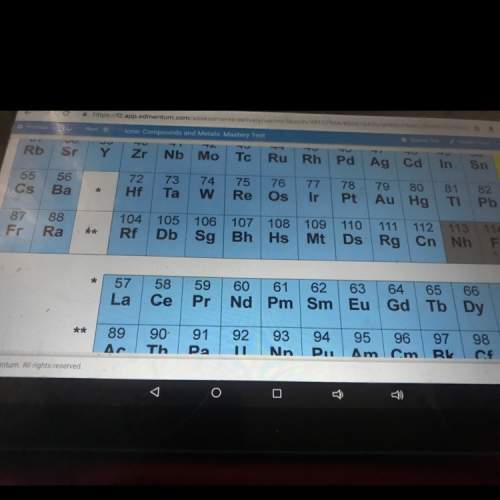
Chemistry, 09.07.2021 03:20 yakshp3702
During a reaction, ΔH for reactants is −750 kJ/mol and ΔH for products is 920 kJ/mol. Which statement is correct about the reaction? (5 points)
Group of answer choices
It is endothermic because the energy required to break bonds in the reactants is less than the energy released when the products are formed.
It is endothermic because the energy required to break bonds in the reactants is greater than the energy released when the products are formed.
It is exothermic because the energy required to break bonds in the reactants is less than the energy released when the products are formed.
It is exothermic because the energy required to break bonds in the reactants is greater than the energy released when the products are formed.

Answers: 2


Other questions on the subject: Chemistry

Chemistry, 22.06.2019 06:10, gabriellestaleyga16
How many moles of gas are present if p=11 atm, v=12l, t=185k?
Answers: 1

Chemistry, 22.06.2019 11:00, Usman458
The twister and runaway train are two coasters at the same amusement park. both coasters start at the same height. the coaster for the twister is twice the mass of the coaster for the runaway train. which roller coaster has greater gravitational potential energy at the start of the ride?
Answers: 1

Chemistry, 22.06.2019 14:30, malenacastillo4887
For the reaction shown, find the limiting reactant for each of the following initial amounts of reactants. 4al(s)+3o2(g)→2al2o3(s) a) 1 molal, 1 mol o2 b) 4 molal, 2.6 mol o2 c) 16 molal, 13 mol o2 d) 7.4 molal, 6.5 mol o2
Answers: 3

Chemistry, 22.06.2019 20:00, 20calzoy
There are two steps in the usual industrial preparation of acrylic acid, the immediate precursor of several useful plastics. in the first step, calcium carbide and water react to form acetylene and calcium hydroxide: cac2 (s) + 2h2o (g) → c2h2 (g) + caoh2 (s) =δh−414.kj in the second step, acetylene, carbon dioxide and water react to form acrylic acid: 6c2h2 (g) + 3co2 (g) + 4h2o (g) → 5ch2chco2h (g) =δh132.kj calculate the net change in enthalpy for the formation of one mole of acrylic acid from calcium carbide, water and carbon dioxide from these reactions. round your answer to the nearest kj .
Answers: 3
You know the right answer?
During a reaction, ΔH for reactants is −750 kJ/mol and ΔH for products is 920 kJ/mol. Which statemen...
Questions in other subjects:

English, 06.11.2020 18:30

Mathematics, 06.11.2020 18:30

History, 06.11.2020 18:30

Biology, 06.11.2020 18:30

Mathematics, 06.11.2020 18:30

Social Studies, 06.11.2020 18:30

History, 06.11.2020 18:30

Mathematics, 06.11.2020 18:30


Business, 06.11.2020 18:30

 is always negative.
is always negative.


